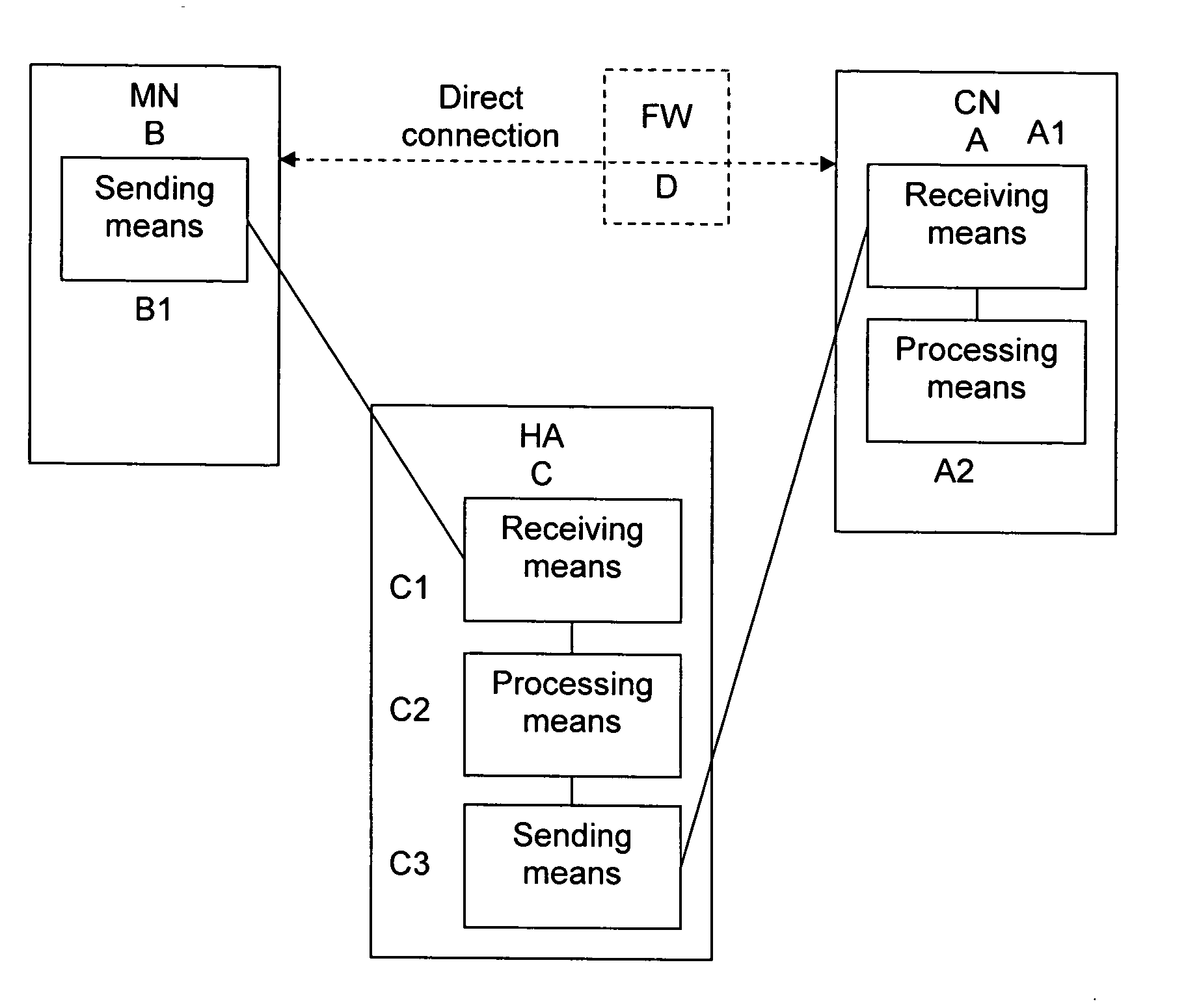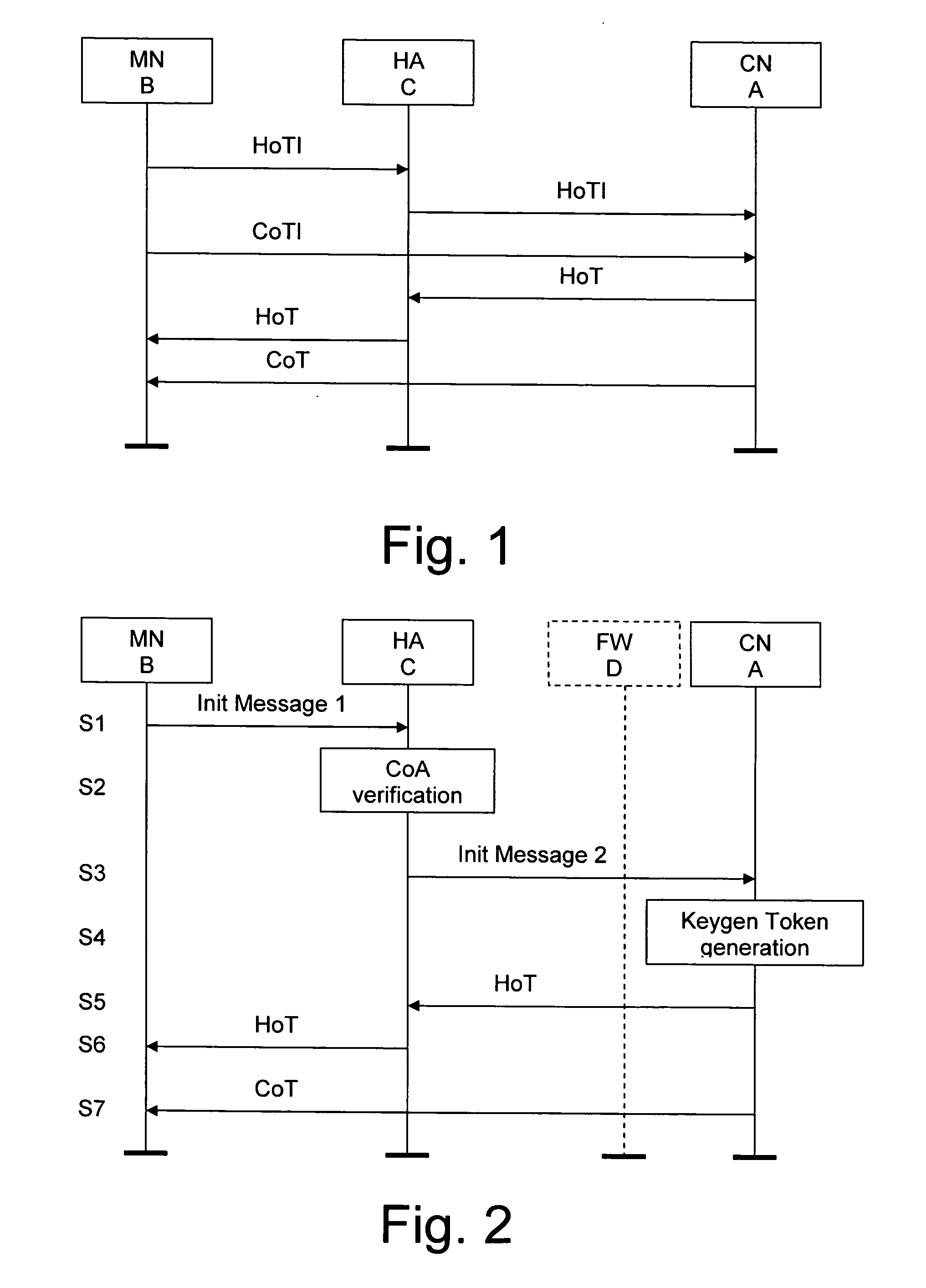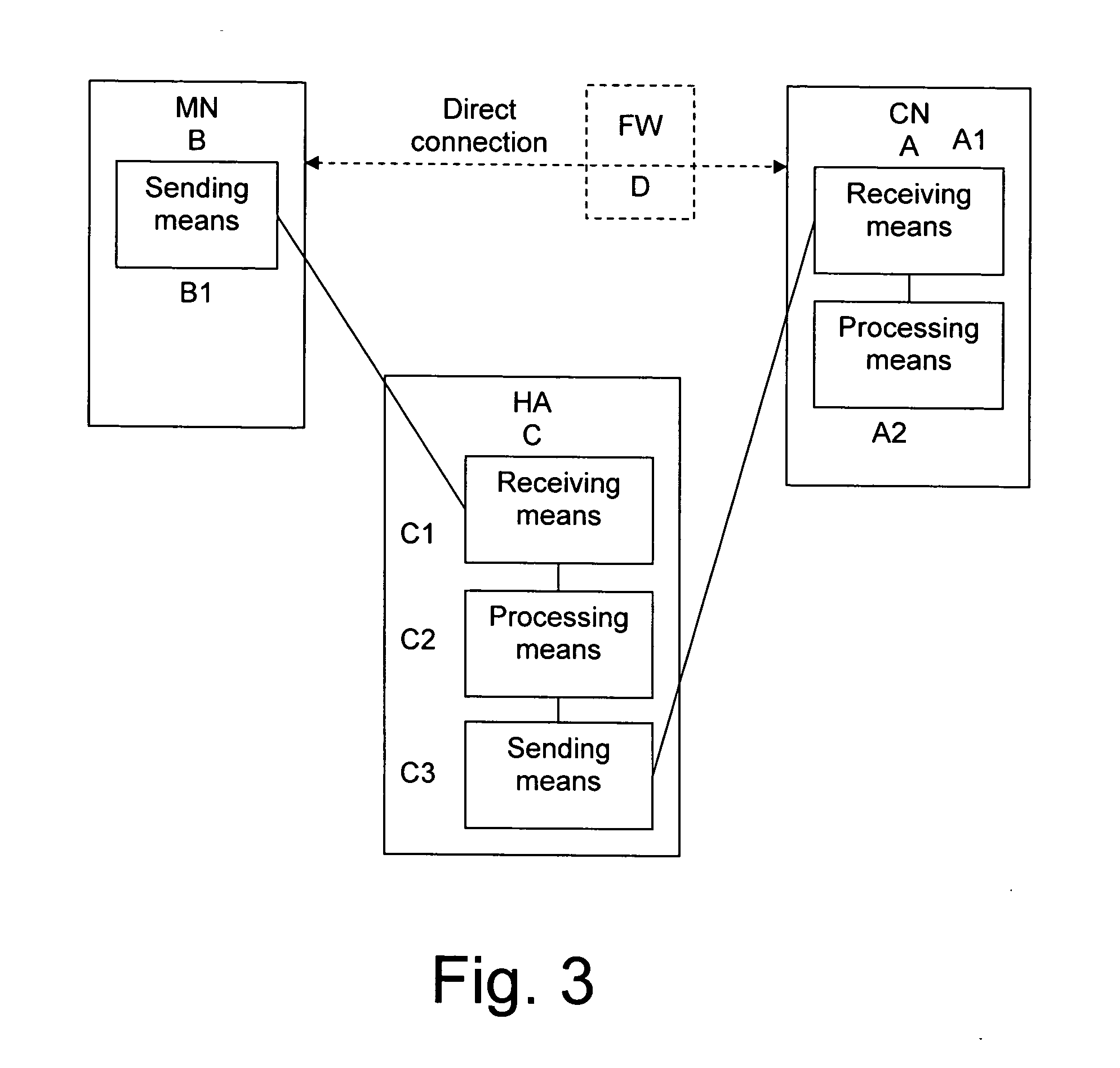Alternative method to the return routability test to send binding updates to correspondent nodes behind firewalls
- Summary
- Abstract
- Description
- Claims
- Application Information
AI Technical Summary
Benefits of technology
Problems solved by technology
Method used
Image
Examples
Embodiment Construction
[0073] In the following, a preferred embodiment of the invention is described.
[0074] As described above, the present invention defines a new method for a Mobile IP node to securely send Binding Update message to its correspondent nodes (so that Route Optimization can be applied). By secure, it is meant that no new attacks are introduced in comparison to current Internet operations.
[0075] As described above, the Mobile IPv6 specifications have defined a procedure, called the Return Routability Test (RRT) to assure that the right mobile node is sending the signaling message. As the RRT, the procedure defined according to the present embodiment of the invention does not require any pre-configured security association, any infrastructure nor any public key.
[0076] The procedure according to the present embodiment is described in the following by referring to the signal flow chart shown in FIG. 2. Similar as in FIG. 1, a Mobile Node (MN) B is roaming and is associated with a Home Agent...
PUM
 Login to View More
Login to View More Abstract
Description
Claims
Application Information
 Login to View More
Login to View More - R&D
- Intellectual Property
- Life Sciences
- Materials
- Tech Scout
- Unparalleled Data Quality
- Higher Quality Content
- 60% Fewer Hallucinations
Browse by: Latest US Patents, China's latest patents, Technical Efficacy Thesaurus, Application Domain, Technology Topic, Popular Technical Reports.
© 2025 PatSnap. All rights reserved.Legal|Privacy policy|Modern Slavery Act Transparency Statement|Sitemap|About US| Contact US: help@patsnap.com



